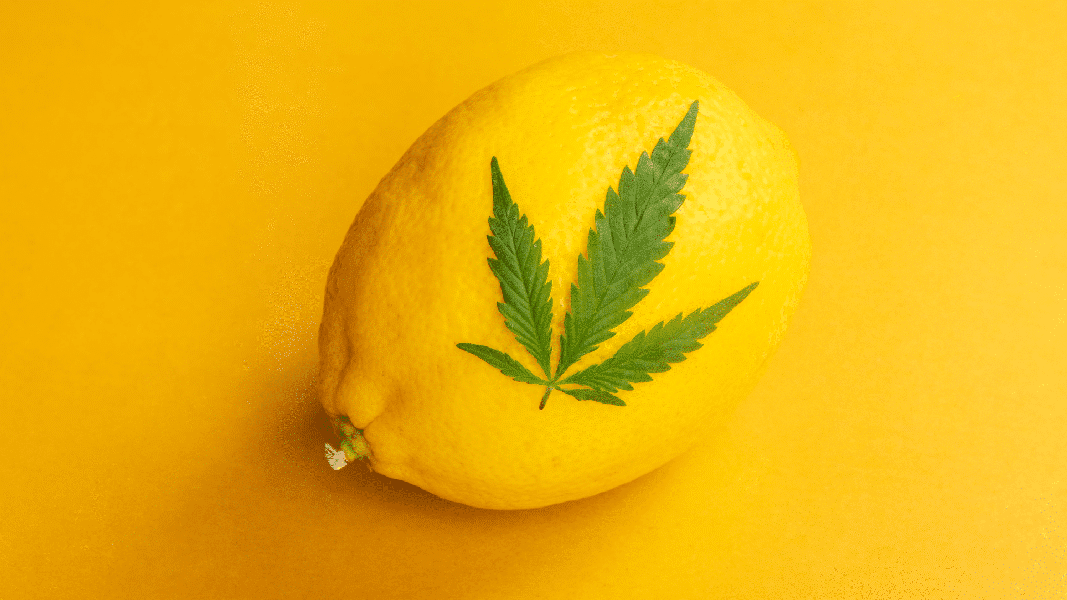
Ten years ago, most cannabis consumers couldn’t tell a terpene from a cannabinoid. But today things are different. Cannabis flower is categorized according to terpene profile. Product manufacturers add terp blends back into edibles and concentrates. Limonene is practically a household name.
And for good reason. Terpenes impart desirable flavors and aromas. And they appear to be good for the body, as well.1 Now it turns out that some terpenes also may contribute to the cannabis high.
A 2021 study2 by University of Arizona scientists concluded that certain terpenes are “cannabimimetic” (in a mouse model of cannabis intoxication) and can selectively enhance cannabinoid activity.
And this month comes a brand-new paper in the journal Biochemical Pharmacology3 by Israeli researchers who report that three cannabis terpenes — at concentrations similar to those found in actual cannabis plants — significantly boost THC signaling at the CB1 receptor.
CB1 Activation
Using an in vitro cellular model, the Israeli team compared CB1 receptor activation by 16 different cannabis terpenes to that of THC alone and to THC-terpene blends with a botanically relevant ratio of 10:1.
When tested individually, all 16 terpenes activated CB1, at about 10% to 50% of activation of THC alone. This is notable in and of itself, though not a huge surprise. While their chemical structures differ quite a bit, terpenes and cannabinoids share key features; both belong to a larger group of plant compounds called terpenoids. In fact, cannabinoids are technically classified as “terpeno-phenolic” substances.
Varying Responses
Next, the researchers tested terpenes and THC together. What they found runs the gamut. In the cases of beta-pinene and geraniol, the mixtures actually produced a smaller effect than the sum of the individual parts, as if these terpenes negated some of THC’s activity.
For eight of the THC-terpene blends, including some of the most common cannabis terpenes — alpha-pinene, beta-caryophyllene, bisabolol, eucalyptol, humulene, myrcene, nerolidol, and terpinolene — CB1 activation equaled that of THC alone. The presence of the terpene seemed to make no difference.
But with three other terpene-THC blends — linalool, ocimene, and terpineol — the researchers observed an additive effect, meaning that CB1 activity equaled the sum observed with THC and the terpene separately. In other words, if the terpene was a 3 and THC was a 7, the blend was a 10.
Finally, three of the terpenes — limonene, borneol, and sabinene — produced a synergistic effect in combination with THC. In these cases, the whole was greater than the sum of its parts: an 11 or 12 rather than the expected 10.
THC-Terpene Synergies
The researchers consider this latter point their most significant finding. It represents the first demonstration of THC-terpene synergism in an in vitro controlled setting, and lends the paper its title: “Selected cannabis terpenes synergize with THC to produce increased CB1 receptor activation.”
Is this evidence of the fabled cannabis entourage effect? Strictly speaking, no, according to the paper’s authors. They note that the term “entourage effect,” as originally coined in a 1998 article in the European Journal of Pharmacology,4 refers to cases where compounds that don’t directly bind to CB1 or CB2 nonetheless boost the activity of the endocannabinoid system.
Since terpenes do activate CB1, this doesn’t fit with the original concept of the entourage effect. “Given that cannabis terpenes demonstrate direct agonism at CB1 receptor,” the authors contend, “THC-terpene effects are beyond the classical definition of entourage.”
Therapeutic Applications?
Semantics aside, the paper’s fundamental findings around THC-terpene interactions, at ratios similar to those in the cannabis plant and at very low terpene concentrations, could have significant implications for both future research and real-world cannabis use.
The simple fact that different terpenes can modify THC activity in different ways seems worthy of attention on its own, but the authors put particular emphasis on their discovery of a synergistic effect for limonene, borneol, and sabinene. While limonene is among the most common cannabis terpenes, borneol is less so, and sabinene is rarer still. As a result, they suggest that these terpenes could be intentionally added to cannabis extracts to maximize effectiveness of their THC content.
“The use of selected terpenes may enable reducing the THC dose in some treatments, and as a result, potentially minimizing the THC-related adverse effects,” they conclude. “This would also help in adjusting the treatment to more sensitive populations such as children and elderly.”
The authors continue, “Enrichment with selected terpenes may allow for composition adjustment to personal needs and to changes during chronic use, such as for daytime versus for sleep.”
Of course, these statements are speculative and not necessarily supported by clinical research. They also smack a bit of marketing-speak, which is not surprising given that four of the authors are employees of the Bazelet Group, a medical cannabis manufacturer in Israel that boasts of using a “breakthrough technology” to “formulate specific desired [cannabinoid-terpene formulations] to supply enhanced therapeutic effect in various medical conditions.”
As always in cannabis science and medicine, the real world is far more complex than the lab, and preclinical findings don’t always translate into lived experience. But at the very least, the study provides further evidence of interactions between terpenes, cannabinoids, and the endocannabinoid system — something Project CBD will explore further in a subsequent article on beta-caryophyllene, the “super terpene.”
Nate Seltenrich, Project CBD contributing writer, is the author of the column Bridging the Gap. An independent science journalist based in the San Francisco Bay Area, he covers a wide range of subjects, including environmental health, neuroscience, and pharmacology. © Copyright, Project CBD. May not be reprinted without permission.
Footnotes
- Cox-Georgian, Destinney et al. “Therapeutic and Medicinal Uses of Terpenes.” Medicinal Plants: From Farm to Pharmacy 333–359. 12 Nov. 2019, doi:10.1007/978-3-030-31269-5_15
- LaVigne, Justin E et al. “Cannabis sativa terpenes are cannabimimetic and selectively enhance cannabinoid activity.” Scientific reports vol. 11,1 8232. 15 Apr. 2021, doi:10.1038/s41598-021-87740-8
- Raz, Noa et al. “Selected cannabis terpenes synergize with THC to produce increased CB1 receptor activation.” Biochemical pharmacology vol. 212 (2023): 115548. doi:10.1016/j.bcp.2023.115548
- Ben-Shabat, S et al. “An entourage effect: inactive endogenous fatty acid glycerol esters enhance 2-arachidonoyl-glycerol cannabinoid activity.” European journal of pharmacology vol. 353,1 (1998): 23-31. doi:10.1016/s0014-2999(98)00392-6






